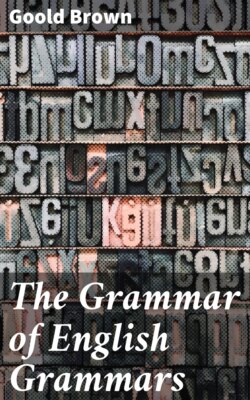Читать книгу The Grammar of English Grammars - Goold Brown - Страница 279
На сайте Литреса книга снята с продажи.
CLASSES.
ОглавлениеPronouns are divided into three classes; personal, relative, and interrogative.
I. A personal pronoun is a pronoun that shows, by its form, of what person it is; as, "Whether it[187] were I or they, so we preach, and so ye believed."—1 Cor., xv, 11.
The simple personal pronouns are five: namely, I, of the first person; thou, of the second person; he, she, and it, of the third person.
The compound personal pronouns are also five: namely, myself, of the first person; thyself, of the second person; himself, herself, and itself, of the third person.
II. A relative pronoun is a pronoun that represents an antecedent word or phrase, and connects different clauses of a sentence; as, "No people can be great, who have ceased to be virtuous."—Dr. Johnson.
The relative pronouns are who, which, what, that, as, and the compounds whoever or whosoever, whichever or whichsoever, whatever or whatsoever.[188]
What is a kind of double relative, equivalent to that which or those which; and is to be parsed, first as antecedent, and then as relative: as, "This is what I wanted; that is to say, the thing which I wanted."—L. Murray. III. An interrogative pronoun is a pronoun with which a question is asked; as, "Who touched my clothes?"—Mark, v, 30.
The interrogative pronouns are who, which, and what; being the same in form as relatives.
Who demands a person's name; which, that a person or thing be distinguished from others; what, the name of a thing, or a person's occupation and character.
